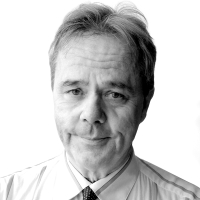Dr. Joseph Meyn arrived early at his first Trump rally, wearing a MAGA-red polo shirt with a Brooks Brothers logo while strolling through the metal detectors and snagging a seat near the stage. He immediately noticed what would soon become the scene of one of the biggest lapses in presidential protection since Ronald Reagan was shot in 1981.
In the aftermath of the Donald Trump shooting, Secret Service Director Kimberly Cheatle needs to explain why her agency failed to address a security failure that was immediately spotted by a 51-year-old obstetrician from Grove City, Pa.
“I looked at the field behind the bleachers and half-joking I said, ‘Look at that field, like it's wide open. Like there’s no barriers, there’s no one back there patrolling. There’s just no one in there,’” Meyn told the Daily Beast. “I was like, ‘Man, if there's gonna be trouble, it’s gonna come from there.’”
Just a few minutes after Trump took the stage, Meyn proved to be a better judge than the people who were in charge of securing the event.
“That's exactly where the bullets came from,” he said.

Dr. Meyn captured this scene from where he was in the bleachers after the shooting, which claimed the life of Corey Comperatore just feet away.
Dr. Joseph MeynA senior law enforcement source who has long worked closely with active Secret Service agents tells the Daily Beast the wide open area Meyn observed should have been within the three concentric security perimeters the Secret Service establishes at such events.
The gunman had encountered the outer perimeter earlier. It was, as is the usual practice, manned by local police and deputies who were to direct any arrivals to the magnetometer screening for weapons at the designated entry points.
A cop radioed that somebody was acting suspiciously around the metal detectors, and word is said to have reached the joint command post staffed both by cops and the Secret Service.

The empty field to Trump's right, or to the left of most of the crowd, gave Crooks a clear field of view from the rooftop he used to fire from.
Google Maps/The Daily Beast
The empty field across which Crooks shot is even more apparent in this 3-D rendering of the site.
Google Earth/Elizabeth Brockway/Daily BeastYet somehow the gunman was able to wander around with a rifle to a building that the security plan should have placed within the outer perimeter. To make it worse the structure the gunman chose to clamber atop has a slanted roof that seems to have initially concealed him from a two-man Secret Service counter sniper team (CST) that was keeping watch from atop a building behind the stage.
A civilian witness later said the gunman “bear-crawled” up to where he could take aim at Trump. Several civilians who had also wandered to the vicinity of the building called out to nearby cops that there was somebody with a gun on the roof. But the cops either did not hear them over Trump’s amplified voice or they simply did not respond.
The gunman, Thomas Crooks, was wearing a military-type shirt with an American flag on the upper arm and the CST may have hesitated lest he be some misdirected local cop. Then the gunman began firing. CST killed him moments afterwards, but he never should have been there in the first place.

Rally-goer Glen Van Tryfle captiured the seconds after the Secret Service's own snipers opened fire, killing Thomas Crooks and ending the danger to former Pres. Trump and the crowd.
Glen Van Tryfle/TMX“It was either an absolutely awful plan or a really bad execution of a bad plan,” the senior law enforcement source said of the security set-up. “I think it is a combination of both of those things. There is no way not to call this a failure.”
The person ultimately responsible for the lapse is Cheatle. She is said by the source to be a bean counter who has on occasion questioned what she views as an excessive number of agents requested for an event.
While that is not necessarily what caused the death of MAGA supporter Corey Comperatore and the wounding of Trump, it will certainly be part of the wider picture going forward. The strain on the Secret Service’s resources will become only bigger given that Trump is campaigning as a former president—which has not happened in a century—in an increasingly volatile political climate.
On top of that, the agency was stretched thin between the NATO summit in Washington D.C. earlier this week and three plane loads of agents being sent to Milwaukee to prepare for the start of the Republican National Convention on Monday.
Whatever the circumstances, the Secret Service is heavily dependent on local law enforcement for back-up: the first security ring is comprised of cops, not agents. And an area like Butler, Pennsylvania cannot furnish the level of support provided by cities such as New York.
It should be noted that under Cheatle’s watch, Trump has received considerably more protection than other former presidents. And in times past, candidates have not received that kind of security until they are formally nominated.
But clearly it was not enough.

The precision with which Secret Service agents covered former Pres. Trump then moved him to safety is beyond question. Now their bosses have to explain what went wrong to create the situation where agents had to do that.
Jabin Botsford/The Washington Post via Getty ImagesWe should admire how Trump’s personal detail responded to the gunfire exactly as they were trained, covering him with their bodies until it was time to move him, then executing a “dynamic egress” as seamlessly as a football play.
Cheatle still needs to explain what the hell happened.






